![]() Sonja's Latest work Drawing Lens-based Design Made in 2005 Other work by Sen + Sonja
Sonja's Latest work Drawing Lens-based Design Made in 2005 Other work by Sen + Sonja
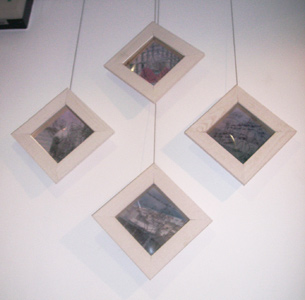
Vignettes and Interstices, 2005.
Four boxes: subtitled, The Global Mind (top), Paradox (left), The Matrix (right),
and the Clock of the Long Now (left).
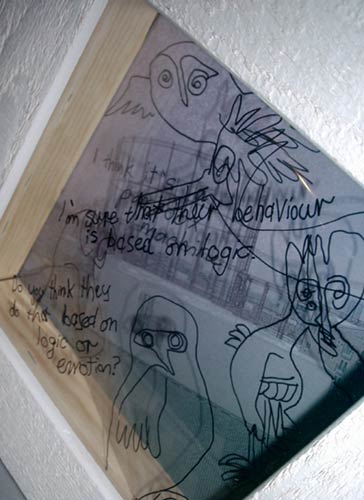
Detail: Vignettes and Interstices - Paradox, 2005.
This theme of culture and nature, expressed through zoomorphic drawings, was originally to be superimposed over photographs taken in the London zoo. However about a month before the exhibition, the London Zoo Publicity department demanded a contact to be signed, giving them a fee for the work as well as for time the work would be exhibited. So I used other images as backdrops and changed the layered imagery to using only drawings.
It might have been a good thing as I think these drawings are quite evocative with the images of suburban London behind them.
Jolanta Jagiello, the curator, had 3 categories for responses to the London Zoo. Our work is a mixture of two categories -a visit to the zoo and to books in the Reference Library of the zoo.
<< Vignettes and Interstices
- The Paradox
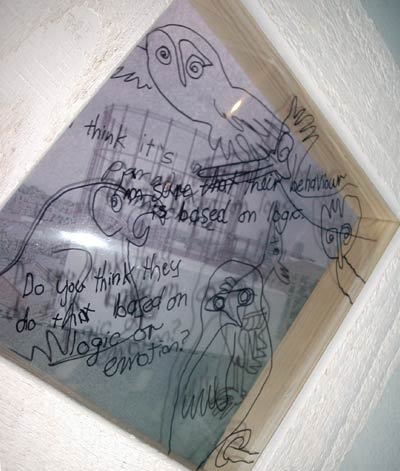
Above and Below: Vignettes and Interstices - Paradox, 2005.
Wild Animals in captivity - an outline of the biology of zoological gardens by H.Hediger, 1964, p. 158.
This book in the London Zoo Library deals with the various needs of wild animals and in particular focuses on the importance of not treating any animal as a play-thing or as human-like with human-like needs. The point in the book is that animals have their own distinctive motives and needs.
These drawings layered through one another in these spaces feature hybrid bird-beings or birds with human-like drives. It is a play on the theme of zoommorphism, warned about in the above mentioned book.
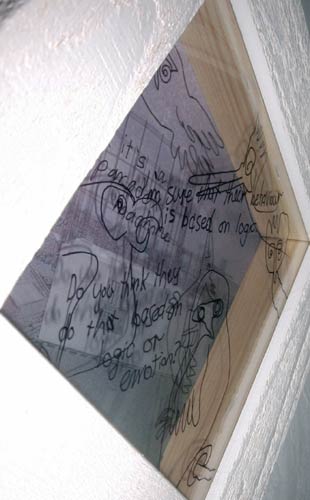
Detail: Vignettes and Interstices - Paradox, 2005.
However these birds are not illustrated as cute or as play-things, rather they serve as metaphors for inquiry - the hybrids here become more, are superior beings.
Inspired by folktales and myths, these are vignettes of 'super' beings - birds who are clever, honest, have a sense of the spiritual.
However the birds here have more in common with the whimsical or reflective than with Mother Goose.
In these 'story boxes,' birds discuss metaphysics, the existence of things, and they ground this in technology and culture. The four boxes are subtitled in turn: The matrix, The global mind, Paradox, and The Clock of the Long Now. The text/drawings and spatial arrangements of each environment focus on: systems and structures, responses to globalisation, problems of shifting paradigm (our changing world/s) and some statements and questions about routes and means in today's multi-faceted world.
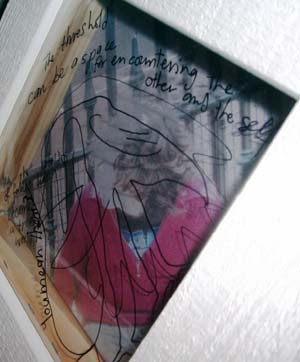
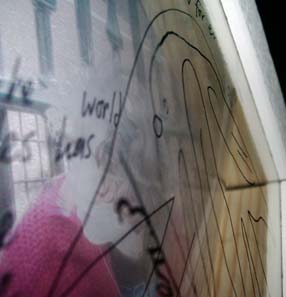
Details: Vignettes and Interstices
- The Global Mind, 2005.
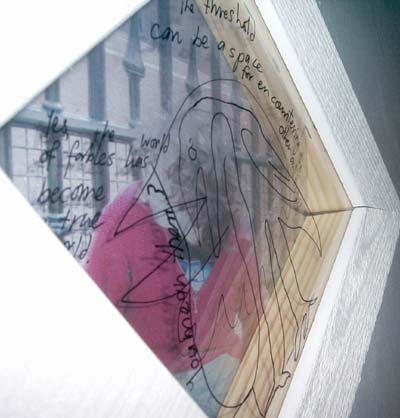
Detail: Vignettes and Interstices - The Global Mind, 2005.
We chose to focus on birds, not only because of the variety of birds seen in the London Zoo in the mixed aviaries and individually, but because in in our urban environment, birds are what we see everday, seemingly unfettered in the skies.
Texts in this work are also inspired by a recent visit to the Ars Electronica conference, Hydrid, living in paradox.
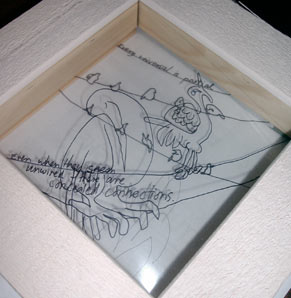
Detail: Vignettes and Interstices - The Matrix,
without the background image.

Detail: Vignettes and Interstices
- The Matrix
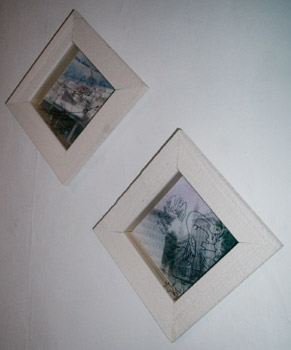
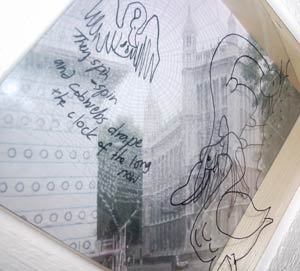
Detail: Vignettes and Interstices
-The Clock of the Long Now, 2005.
>> Vignettes and Interstices - The Matrix (top) and,
- The Clock of the Long Now.

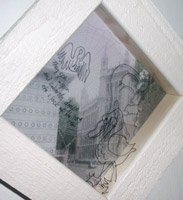

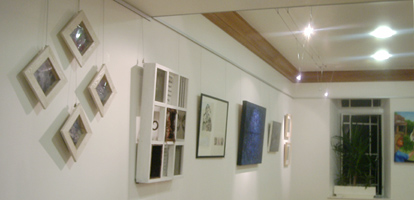
A few works in the Zoo-a-logical show
curated by Jolanta Jagiello,
Knapp Gallery, Regents Park, London, October - November 2005
See more of this show
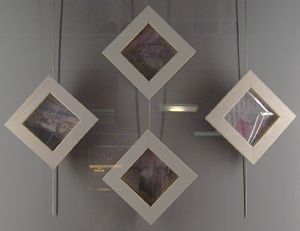 |
| ||||||||||||||||
>> Three works by Sonja, Sen + Jacqueline in the Vredenburg Passage way in the Music Centre next to the Utrecht Railway Station.
| 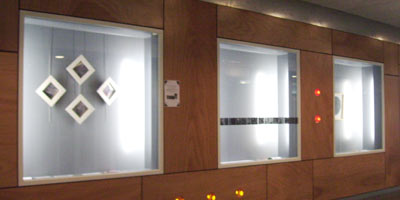 |